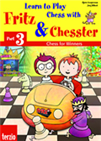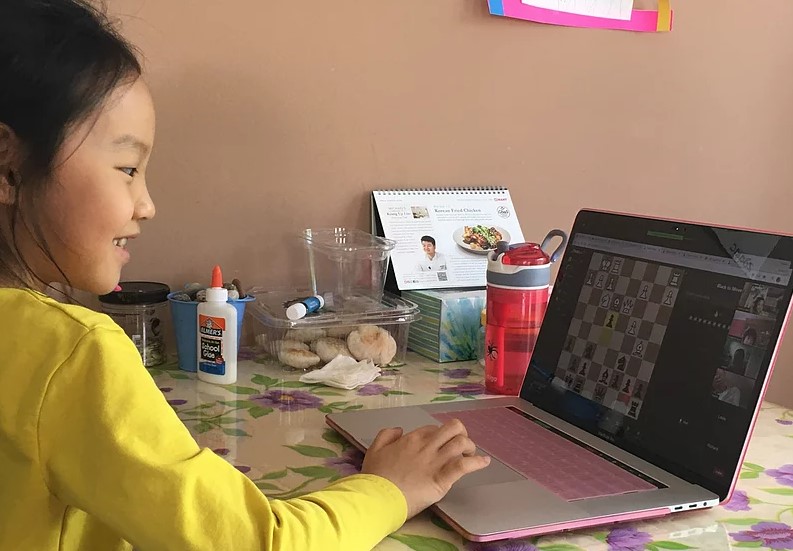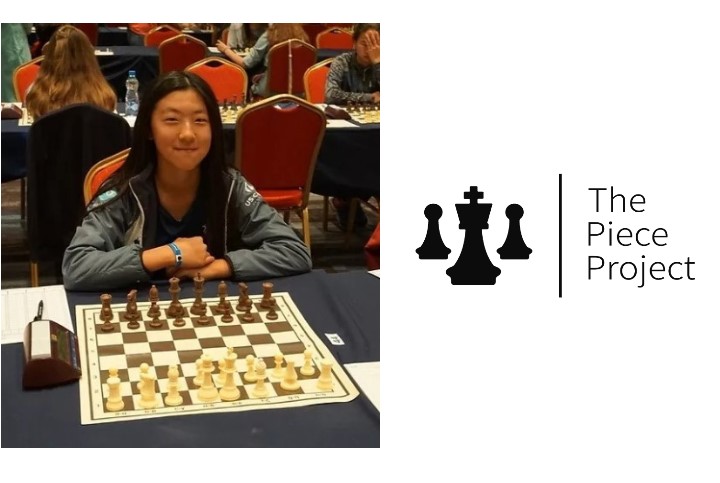Starting the Piece Project
Ashley Yan is an eleventh grade student at Stevenson High School in Chicago, Illinois. In the summer of 2020, she and her friends began The Piece Project. So far, The Piece Project instructors have taught children mostly in the Chicago area. Now, they would like to go beyond their community and reach out to students, instructors, and partners from different states and countries. Woman International Master Alexey Root interviewed Yan to find out more.
 Alexey Root (AR): The Piece Project makes me think of “peace” too. Are there some non-chess goals for this nonprofit?
Alexey Root (AR): The Piece Project makes me think of “peace” too. Are there some non-chess goals for this nonprofit?
Ashley Yan (AY): At the time we created our nonprofit, the pandemic was keeping everyone at home and most in-person activities were canceled. We thought that offering online chess lessons could give kids a fun activity to enjoy while they’re stuck at home, regardless of their chess experience or commitment.
AR: Are you and your fellow instructors all students at Stevenson High School in Chicago, and did you meet each other there?
AY: We all currently go to Stevenson High School and know each other through there. Most of our instructors are on the Stevenson chess team, where we regularly practice and compete against other schools. In 2020, the Stevenson High School chess team won the Illinois High School Association State Championship. Winning motivated us and inspired the nonprofit idea too.
AR: Why reach out beyond Chicago for students and mentors?
AY: We think expanding chess beyond our local community will help us introduce the game to more kids who may not have much experience and are looking to improve. So far, we’ve received a lot of positive feedback from parents and kids who enjoyed learning chess during the pandemic and were inspired to continue playing. We want to provide an accessible chess education on a larger scale.
In addition to students, this could also be an opportunity for more experienced chess players to teach a class and help aspiring players. I think that because our organization is entirely virtual, it makes our classes very accessible and easy to get involved in through various ways. We would like to take advantage of that and provide more opportunities for both students and mentors.
AR: What happens to The Piece Project when you and your fellow instructors head off to college in 2-4 years?
AY: We definitely hope to keep our organization growing even after we go to college. We’re most likely going to pass the leadership down to future high schoolers who are also passionate about using chess to help and inspire kids.
 This unforgettable chess adventure is designed to advance young chess player’s skills, move by move. Discover mini-games, brain-twisters and more at every attraction. Pick up chess tips and skills as you ride in bumper cars and the Ferris wheel. Polish up your chess strategy and tactics, opening, middle game and endgame and use what you’ve learned to win. You’ll have lots of fun while you learn more about the serious business of playing – and winning – chess!
This unforgettable chess adventure is designed to advance young chess player’s skills, move by move. Discover mini-games, brain-twisters and more at every attraction. Pick up chess tips and skills as you ride in bumper cars and the Ferris wheel. Polish up your chess strategy and tactics, opening, middle game and endgame and use what you’ve learned to win. You’ll have lots of fun while you learn more about the serious business of playing – and winning – chess!
A student of the Piece Project
AR: Is there anything else you would like ChessBase readers to know about The Piece Project?
AY: Our organization mainly focuses on teaching kids how to play chess, but the overarching purpose is beyond increasing their rating and skill. Chess helps our students develop other skills, like determination, patience, and creativity. The time I spent practicing and the skills I learned from that experience are a lot more valuable and memorable than the rating itself, a fundamental idea of our organization.
At the same time, though, many students are extremely committed to chess and want to increase their ratings. Therefore, we have specific classes for kids at different levels and with varying time commitments. Overall, we hope that our classes help aspiring players grow in experience and that we’ve inspired new players to further pursue chess.
Ashley Yan annotated one of her games with comments she might share with a student during a lesson.
What’s the easiest way to win a chess game? We all know finding a good tactic in a game can let you win a point immediately. Therefore, Fundamentals of Tactics is an excellent choice for you if you wish to learn how to start finding tactics in your games!
Links


















 Alexey Root (AR): The Piece Project makes me think of “peace” too. Are there some non-chess goals for this nonprofit?
Alexey Root (AR): The Piece Project makes me think of “peace” too. Are there some non-chess goals for this nonprofit?





